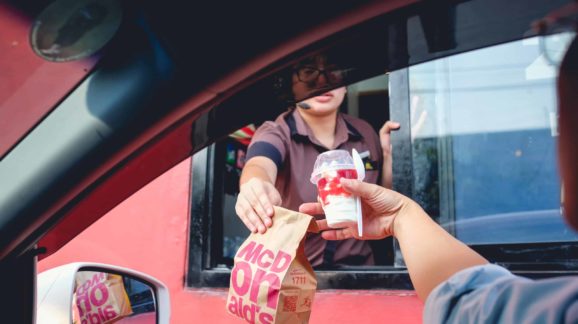California’s $20 fast food worker minimum wage a regressive tax

Photo Credit: Getty
California’s new $20 an hour minimum wage for fast food restaurants has turned into a regressive tax on the state’s low-income residents. People who wanted their cheeseburger or fried chicken fixes will have to pay even more out of pocket to get it.
Menu prices have risen by 10 percent in California restaurants subject to the state’s minimum wage rule, which was targeted at chain restaurants like McDonald’s and Popeye’s and went into effect April 1. That far outpaces the rise in fast food prices nationally, according to the Wall Street Journal. (The restaurant industry prefers the term “quick service” instead of fast food but I’m going to stick with the more common phrase.)
Americans across all income groups eat fast food, but the core consumers are low-income families according to the Morning Consult. Any price increase is going to hit them the hardest and further limit their meal options.
California Gov. Gavin Newsom and other supporters of the regulation justified it on the grounds that the fast food restaurants could afford to pay their workers more and that the businesses would simply absorb the higher costs. But as anyone who has taken Economics 101 knows, the higher costs inevitability trickle down to consumers because, well, they’re the ones who pay.
Newsom and his allies on the issue argue that it’s worth it anyway because it helps the workers. “These are wages that will go towards basic necessities like rent and groceries,” a Newsom spokesman told the Journal. Newsom’s position was not so principled that he was above granting exceptions to businesses run by his friends.
Yes, parent corporations like McDonald’s and Wendy’s may be wealthy but their franchisees are typically small, independent businesses that merely rent out the corporate brand. These franchisees pay to get the benefit of the corporation’s advertising, business methods, and customer loyalty but otherwise operate on their own. Most individual restaurants operate on slim profit margins and they’re the ones that hire the workers. A higher minimum wage means upping those restaurants’ labor costs. Most don’t have any choice but to increase what they charge customers.
There’s scant evidence that workers are benefiting from the hike. Restaurants are shedding jobs as they turn towards automation and switch to app-based delivery services to off-set the higher cost of doing business in the Golden State. The Wall Street Journal reported in March that Golden State pizza delivery restaurants alone cut nearly 13,000 jobs, opting instead to use outside app-based delivery services.
There’s abundant evidence of the correlation between higher minimum wages and unemployment in California. The Golden State’s minimum wage laws have long outpaced the federal government’s minimum requirements and the $20 rate for fast food restaurants is easily the highest in the nation. California has also consistently led the nation in having higher unemployment, having averaged 1.5 points above the national rate for the last two decades. It’s certain that business owners will rely more on automation and other workarounds to offset the latest increase in labor costs.
So, workers are losing jobs, managers are seeing lower profits, and customers are being forced to pay more for their food. Talk about an unhappy meal.